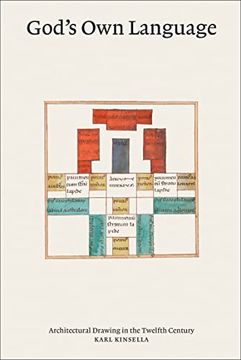Share
God’S own Language: Architectural Drawing in the Twelfth Century
Karl Kinsella (Author)
·
The Mit Press
· Hardcover
God’S own Language: Architectural Drawing in the Twelfth Century - Karl Kinsella
Choose the list to add your product or create one New List
✓ Product added successfully to the Wishlist.
Go to My Wishlists
Origin: U.S.A.
(Import costs included in the price)
It will be shipped from our warehouse between
Friday, August 16 and
Friday, August 23.
You will receive it anywhere in United Kingdom between 1 and 3 business days after shipment.
Synopsis "God’S own Language: Architectural Drawing in the Twelfth Century"
How modern architectural language was invented to communicate with the divine--challenging a common narrative of European architectural history. The architectural drawing might seem to be a quintessentially modern form, and indeed many histories of the genre begin in the early modern period with Italian Renaissance architects such as Alberti. Yet the Middle Ages also had a remarkably sophisticated way of drawing and writing about architecture. God's Own Language takes us to twelfth-century Paris, where a Scottish monk named Richard of Saint Victor, along with his mentor Hugh, developed an innovative visual and textual architectural language. In the process, he devised techniques and terms that we still use today, from sectional elevations to the word "plan." Surprisingly, however, Richard's detailed drawings appeared not in an architectural treatise but in a widely circulated set of biblical commentaries. Seeing architecture as a way of communicating with the divine, Richard drew plans and elevations for such biblical constructions as Noah's ark and the temple envisioned by the prophet Ezekiel. Interpreting Richard and Hugh's drawings and writings within the context of the thriving theological and intellectual cultures of medieval Paris, Karl Kinsella argues that the popularity of these works suggests that, centuries before the Renaissance, there was a large circle of readers with a highly developed understanding of geometry and the visual language of architecture.
- 0% (0)
- 0% (0)
- 0% (0)
- 0% (0)
- 0% (0)
All books in our catalog are Original.
The book is written in English.
The binding of this edition is Hardcover.
✓ Producto agregado correctamente al carro, Ir a Pagar.

